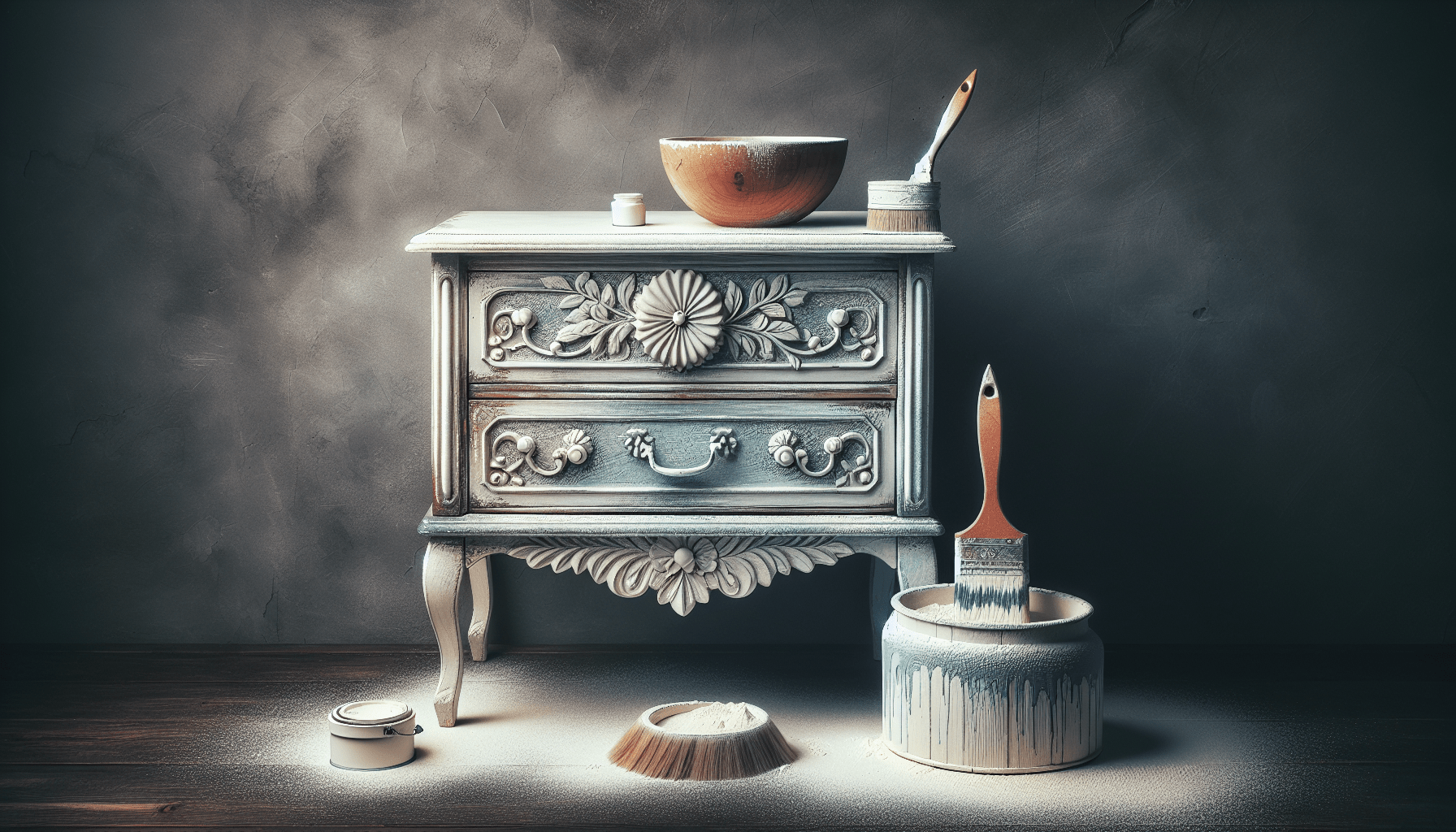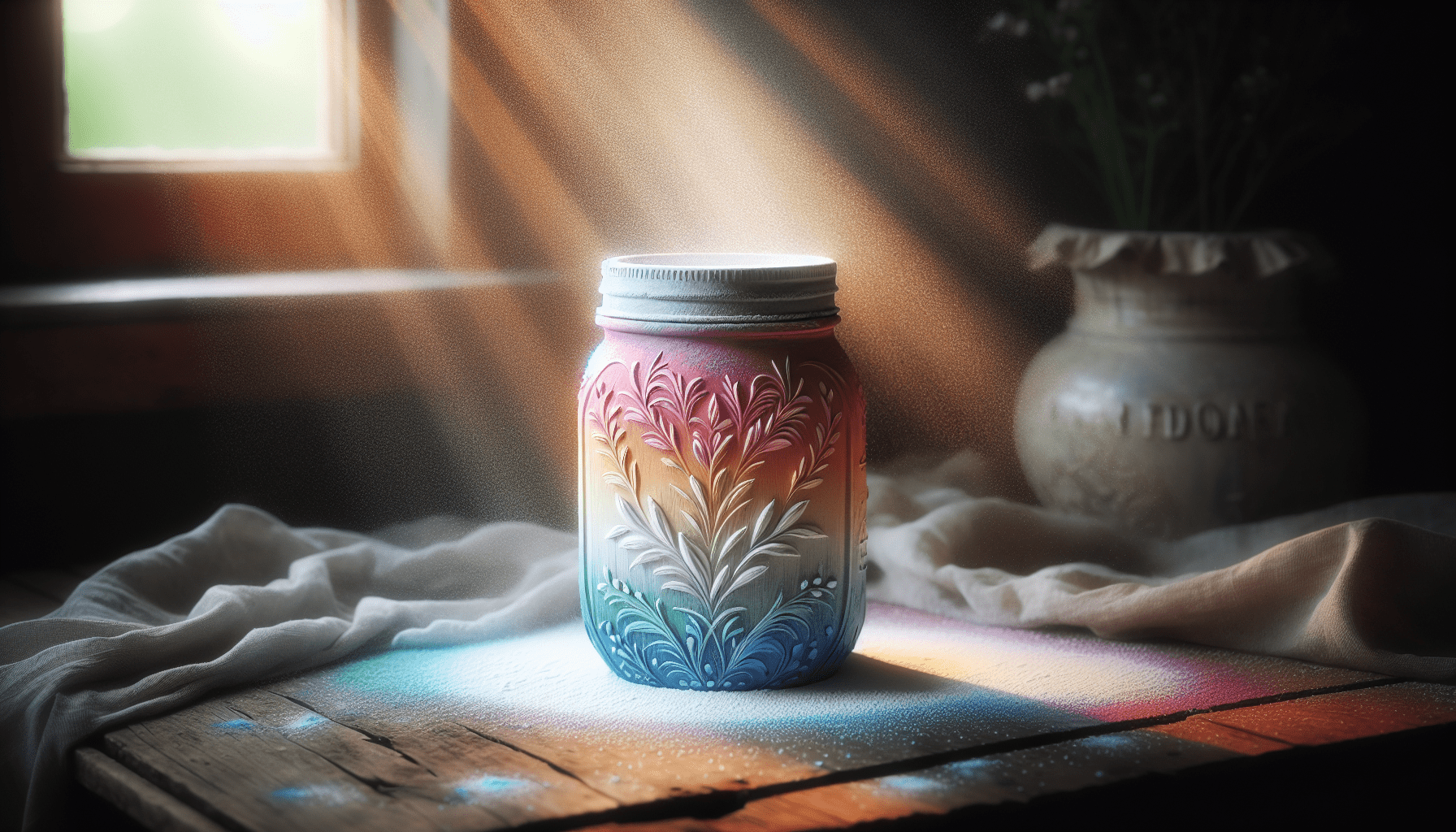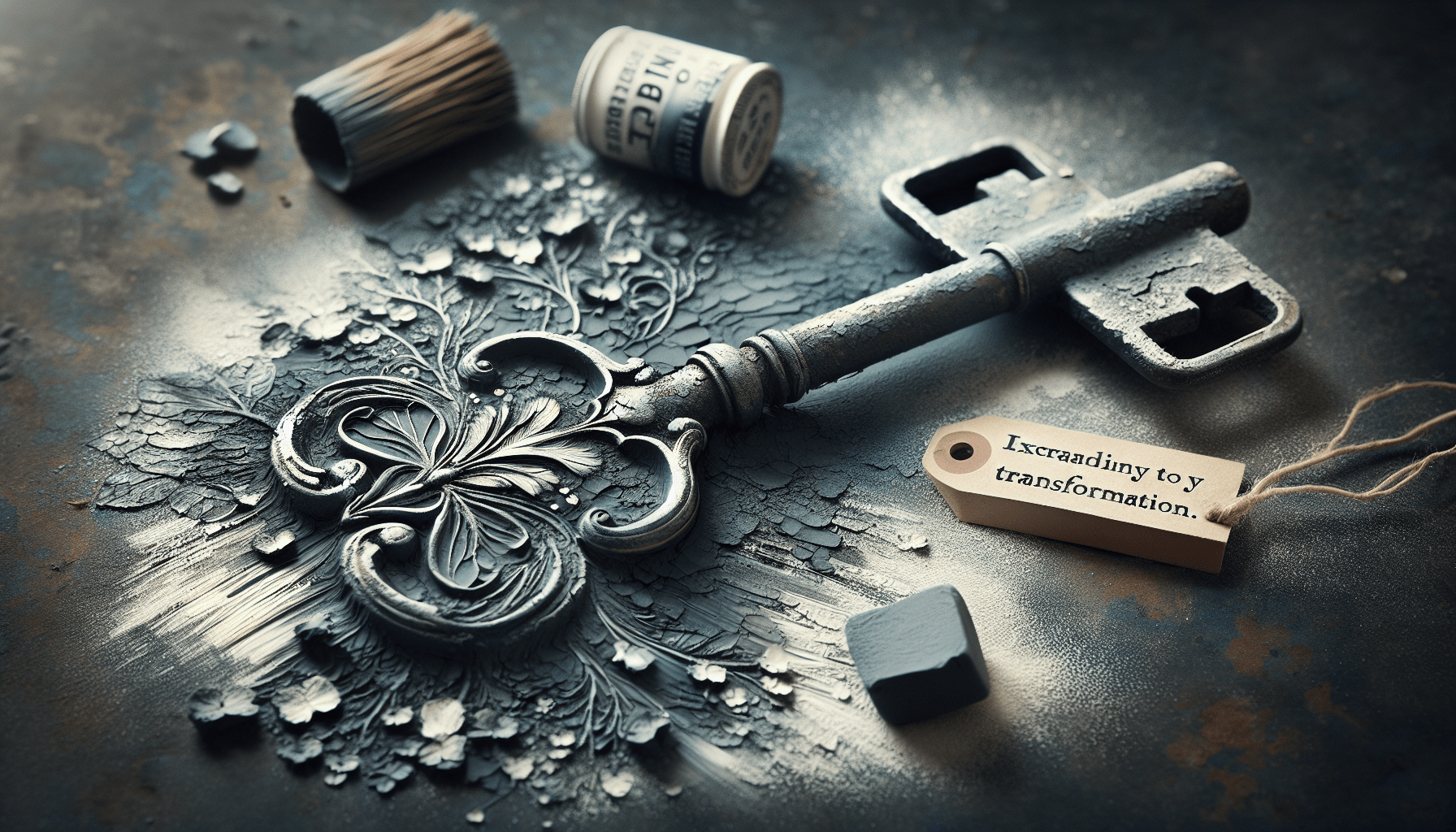Chalk paint has become increasingly popular due to its unique matte finish and its ability to adhere to various surfaces. However, when it comes to painting a bathroom, there are several factors to consider that can significantly impact the durability of chalk paint. From the high levels of moisture to the frequent use of cleaning products, bathrooms present a challenging environment for any type of paint. In this article, we will explore the effectiveness of chalk paint in a bathroom setting, discussing its advantages and limitations, as well as providing practical tips to ensure its longevity in this specific area of your home.
Suitability of Chalk Paint for Bathrooms
Advantages of Using Chalk Paint in Bathrooms
Chalk paint offers several advantages when used in bathrooms. Firstly, it provides a unique and visually appealing matte finish that adds a touch of elegance to any bathroom decor. The soft, velvety texture of chalk paint creates a sophisticated look that can enhance the overall aesthetics of the space. Additionally, chalk paint is highly versatile and can be applied to various surfaces, including wood, metal, and even tiles. This makes it an ideal choice for bathroom cabinets, vanity units, and other furniture or fixtures that require a fresh coat of paint.
Another advantage of using chalk paint in bathrooms is its ease of application. Unlike traditional paint, chalk paint does not require extensive surface preparation, such as sanding or priming. Its thick consistency allows for excellent coverage and easy application, even for beginners. Additionally, chalk paint is known for its quick drying time, which means you can complete your bathroom makeover in a shorter time frame compared to other paint options.
Considerations Before Using Chalk Paint in Bathrooms
While chalk paint offers many benefits for bathroom use, there are some important considerations to keep in mind before making the decision to use it. One significant factor to consider is the level of moisture and humidity in your bathroom. Bathrooms are naturally high-moisture environments, and this can potentially affect the durability and longevity of chalk paint. It is crucial to assess the ventilation and moisture levels in your bathroom before proceeding with chalk paint application.
Additionally, chalk paint may not be suitable for all bathroom surfaces. For instance, if you plan to paint the walls or floor, it is essential to evaluate the material and condition of the surface. Chalk paint may not adhere well to certain tiles or stone surfaces, and it may require additional preparation or priming for optimal results. Lastly, it is important to consider your personal style and design choices. While chalk paint offers a unique finish, it may not be the best fit for all bathroom styles. Consider the overall aesthetic you wish to achieve and evaluate whether chalk paint aligns with your vision.
Preparation and Application Process
To ensure a successful chalk paint application in your bathroom, proper preparation and application techniques are key. Begin by thoroughly cleaning the surfaces you plan to paint, ensuring they are free of dust, grime, and any previous finishes. Next, lightly sand the surfaces to create a slightly rough texture, which will help the paint adhere better.
Once the surfaces are clean and sanded, it is essential to choose the right type of chalk paint for your bathroom project. Opt for a high-quality bathroom-grade chalk paint that offers increased durability and water resistance. It is also beneficial to select a paint color that complements your bathroom decor and desired aesthetic.
Before applying the paint, consider using a primer designed specifically for chalk paint. This step can enhance adhesion and improve the overall finish of the paint. After priming, start the application process by using a brush or roller, depending on the size and nature of the surface. Apply thin and even coats of chalk paint, allowing each coat to dry completely before applying the next one. Finally, seal the paint with a water-resistant topcoat or wax to increase its longevity and protect it from moisture.
Durability and Water Resistance
Factors Affecting Chalk Paint Durability in Bathrooms
Although chalk paint is known for its durability, its performance in bathrooms can be influenced by various factors. One crucial factor is the quality of the chalk paint itself. It is vital to choose a high-quality paint that is specifically formulated for bathroom use. Such paints usually contain additives that enhance their water resistance and durability, ensuring they can withstand the challenging conditions of a bathroom environment.
Another factor that can affect chalk paint durability is the level of wear and tear the painted surfaces are exposed to. In high-traffic areas such as bathroom cabinets and vanity tops, the constant use of cleaning products and water splashes can gradually wear down the paint over time. Additionally, if the surfaces are not adequately sealed, they may be susceptible to damage from moisture and humidity.
Proper Sealing for Increased Water Resistance
To improve the water resistance of chalk paint in bathrooms, it is essential to apply a suitable sealer or topcoat. There are various options available, including water-based polyurethane, wax, or clear varnish. These sealers create a protective barrier over the painted surface, preventing water from seeping into the paint and causing damage.
It is crucial to select a sealer that is compatible with chalk paint and suitable for bathroom use. Water-based sealers are often the preferred choice, as they do not yellow or change the appearance of the paint. Apply the sealer according to the manufacturer’s instructions, ensuring even coverage and thorough drying between coats. Proper sealing can significantly enhance the water resistance and durability of chalk paint in bathrooms, prolonging its lifespan.
Cleaning and Maintenance Tips
Proper cleaning and maintenance are essential for preserving the appearance and durability of chalk paint in bathrooms. When cleaning chalk paint surfaces, it is advisable to use mild, non-abrasive cleaners and avoid harsh chemicals that can damage the paint. Additionally, avoid excessive scrubbing or abrasive sponges, as they can wear down the paint over time.
Regular maintenance includes wiping down the painted surfaces with a soft cloth or microfiber cloth to remove any dust or debris. Avoid using excessive water on the painted surfaces, as prolonged exposure to water can potentially cause damage, even with a sealed finish. It is also important to address any spills or stains promptly to prevent them from penetrating the paint.
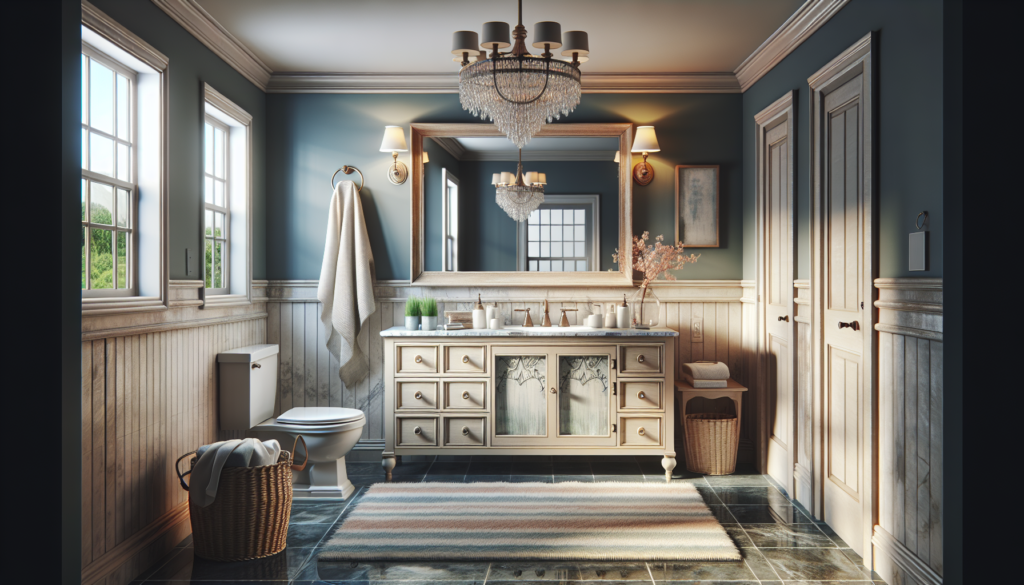
Impact on Moisture and Humidity
Effects of Moisture and Humidity on Chalk Paint
Moisture and humidity can have a significant impact on chalk paint in bathrooms. High levels of moisture can cause the paint to become soft, peel, or bubble, compromising its durability and appearance. Additionally, excessive humidity can result in mold and mildew growth on the painted surfaces, leading to potential health hazards and aesthetic issues.
Preventing Moisture Damage in Bathrooms
To prevent moisture damage to chalk paint in bathrooms, it is essential to address the underlying causes of excess moisture. Proper ventilation is crucial for reducing humidity levels, so ensure your bathroom has adequate ventilation, such as exhaust fans or windows. This helps to expel moist air and prevent prolonged exposure to high humidity.
Additionally, it is advisable to use bathroom-friendly chalk paint that contains moisture-resistant additives. These additives can help the paint withstand the naturally humid conditions of bathrooms, decreasing the risk of damage. Furthermore, sealing the chalk paint with an appropriate topcoat or wax can provide an additional layer of protection against moisture.
Addressing High Humidity Conditions
In cases where high humidity conditions persist in the bathroom, supplementary measures can be taken to mitigate potential damage to chalk paint. Using a dehumidifier can help reduce humidity levels and maintain a drier environment, which is beneficial for preserving the paint’s longevity. Regularly inspect areas prone to excess moisture, such as near showers or bathtubs, and address any leaks or moisture issues promptly to prevent damage to the painted surfaces.
Chalk Paint Finish Options
Different Types of Chalk Paint Finishes
Chalk paint offers a variety of finish options, allowing you to achieve different looks and effects in your bathroom. The most common chalk paint finish is a matte, velvety texture that provides a smooth and sophisticated appearance. This finish works well in bathrooms with a modern or vintage-inspired design, adding a touch of elegance to the space.
Another popular chalk paint finish is a distressed or aged effect. This technique involves selectively sanding and distressing the painted surface to create a worn and weathered appearance. Distressed finishes can add character and a rustic charm to a bathroom, especially in farmhouse or shabby-chic styles.
Suitable Finish Options for Bathrooms
When choosing a chalk paint finish for bathrooms, it is important to consider both aesthetics and functionality. While matte and distressed finishes are visually appealing, they may not offer the best durability in high-moisture environments. For increased water resistance, consider using a satin or semi-gloss topcoat along with the chalk paint. These finishes have a slight sheen and provide added protection against moisture and stains.
Another suitable finish option for bathrooms is a textured or stenciled effect. This involves using various tools or stencils to create patterns or textures on the painted surface. Textured finishes can add depth and visual interest to bathroom walls or furniture, creating a unique and personalized look.
Choosing the Right Finish
The choice of the right chalk paint finish ultimately depends on your personal preferences and the overall design concept of your bathroom. Consider the aesthetic you wish to achieve, the level of durability required, and the compatibility with other bathroom elements such as fixtures, tiles, and accessories. It can also be helpful to consult with a professional or seek inspiration from design magazines and online resources to identify the most suitable finish option for your bathroom project.
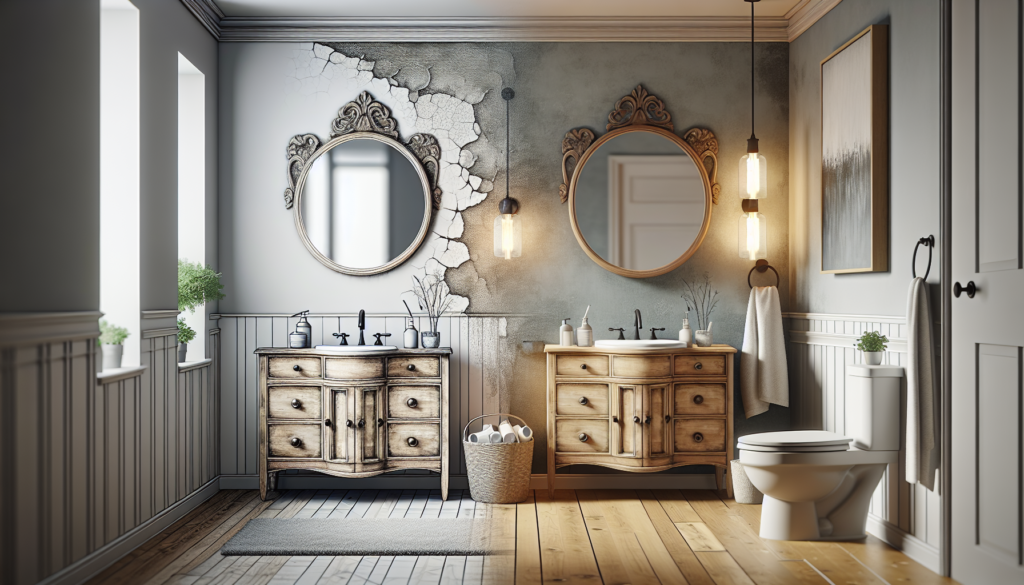
Preventive Measures for Longevity
Preparing the Bathroom Surface
Proper preparation of the bathroom surface is crucial for ensuring the longevity of the chalk paint. Begin by thoroughly cleaning and removing any existing paint or finishes. If necessary, sand the surface to create a slightly rough texture that will help the chalk paint adhere better. It is also important to repair any cracks, holes, or damage to the surface before painting. This ensures a smooth and even application of the chalk paint and minimizes the risk of future issues.
Choosing the Right Primer for Chalk Paint
Using a suitable primer is an important step in preparing the bathroom surface for chalk paint. A good-quality bonding primer specifically designed for chalk paint can enhance adhesion and improve the overall finish. Apply the primer according to the manufacturer’s instructions, ensuring even coverage and thorough drying before proceeding with the application of chalk paint. Proper priming helps create a strong bond between the surface and the paint, improving its longevity and durability.
Applying Multiple Coats
To achieve a smooth and even finish with chalk paint, it is often necessary to apply multiple coats. This is particularly important in areas that experience high usage or are exposed to water frequently, such as bathroom cabinets or vanity tops. Applying several thin coats of chalk paint allows for better coverage and improves the overall durability of the paint. Ensure each coat is fully dry before applying the next, as this helps prevent cracking or peeling.
Potential Issues and Solutions
Chipping and Peeling of Chalk Paint
While chalk paint is generally known for its durability, chipping and peeling can occur, especially in areas subjected to high usage or excessive moisture. To address chipping or peeling issues, it is important to identify the underlying cause of the problem. In some cases, poor surface preparation or inadequate adhesion may be the main culprits. If this is the case, it may be necessary to remove the affected paint and reapply it after proper surface preparation and bonding.
When dealing with localized chipping or peeling, repairing the affected areas can be a feasible solution. Begin by sanding the edges of the chipped or peeled paint to create a smooth transition between the painted and unpainted areas. Fill any gaps or uneven surfaces with wood filler or spackle, ensuring a level and seamless appearance. Once the repaired areas are dry, apply a fresh coat of chalk paint, making sure to blend it with the surrounding painted surfaces for a uniform finish.
Mold and Mildew Growth on Chalk Paint
Bathrooms are prone to mold and mildew growth due to the high humidity and moisture levels. Although chalk paint itself is not inherently mold-resistant, there are preventive measures to curb mold and mildew growth on chalk-painted surfaces.
Regular cleaning and maintenance, as mentioned earlier, can help prevent the buildup of mold and mildew. Additionally, ensure proper ventilation in the bathroom by using exhaust fans or opening windows during and after showering. This helps to reduce the humidity level and prevents the ideal conditions for mold and mildew growth.
In cases where mold or mildew has already formed on chalk-painted surfaces, it is necessary to remove the growth and address the underlying cause. Use a mold and mildew remover or a mixture of water and bleach to effectively eliminate the mold. After cleaning, thoroughly dry the surfaces, and consider applying a mold-resistant primer before repainting the area.
Repairing and Touching Up
Over time, chalk paint may require repairs or touch-ups to restore its appearance. If you notice areas of chipping, peeling, or minor damage, it is advisable to address them promptly. Begin by sanding the damaged area to remove any loose or flaking paint. Clean the surface thoroughly and ensure it is dry before applying a thin coat of chalk paint. Feather the edges of the new paint onto the surrounding painted surface to create a seamless blend. Once the touch-up paint has dried, consider applying a protective topcoat or wax to enhance its longevity and resistance to moisture and wear.
Other Considerations
Alternative Paint Options for Bathrooms
While chalk paint offers unique advantages for bathroom use, there are alternative paint options to consider based on personal preferences and project requirements. Acrylic latex paint, for instance, is a popular choice for bathrooms due to its durability, water resistance, and wide range of finish options. This type of paint is highly versatile and can be applied to various surfaces, including walls, furniture, and cabinets.
Epoxy paint is another alternative that offers exceptional durability and water resistance, making it suitable for high-moisture areas such as showers and tubs. However, epoxy paint can be more challenging to apply and may require professional assistance.
Using Chalk Paint for Specific Bathroom Surfaces
While chalk paint can be used on various bathroom surfaces, there are specific considerations for different areas. For bathroom cabinets and vanities, chalk paint provides an excellent option due to its ease of application and versatility. It can transform outdated or worn-out cabinets into stylish focal points. On the other hand, for bathroom walls and floors, it is crucial to assess the condition and material of the surface. Chalk paint may not adhere well to certain tile or stone surfaces, and it may require additional preparation or a different paint option for optimal results.
Personal Style and Design Choices
The choice to use chalk paint in a bathroom ultimately depends on personal style and design choices. Consider the overall aesthetic you wish to achieve and evaluate whether chalk paint aligns with your vision. Chalk paint offers a unique finish that can complement various design styles, from modern and minimalistic to vintage and rustic. Take into account other bathroom elements such as fixtures, tiles, and accessories to ensure a cohesive and harmonious look. Consult with a professional or seek inspiration from design resources to make informed decisions regarding your bathroom paint choice.

